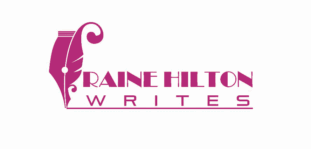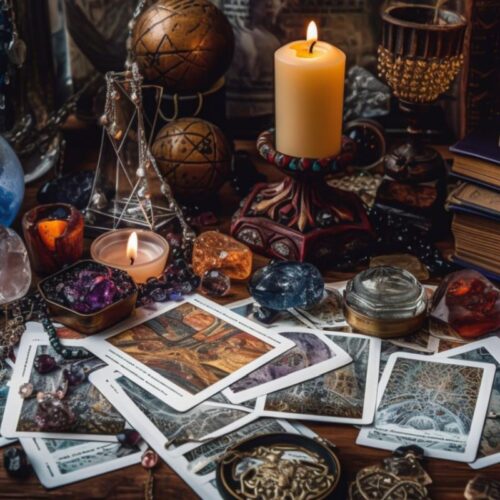An Overview of Divination Tools: Techniques and Uses
Divination, the practice of seeking knowledge of the future or the unknown through supernatural means, has been a part of human history across cultures and eras. Various tools and techniques have been employed to facilitate this process. Here, we explore the most common divination tools, their uses, and effective methods for working with them. It is good to try different styles of divination to find which ones suit you best.
Tarot Cards
Tarot cards are a deck of 78 cards, each with rich imagery and symbolism. The deck is divided into the Major Arcana (22 cards) and the Minor Arcana (56 cards).
Uses:
– Gaining insight into personal situations
– Exploring relationships
– Providing guidance on decision-making
Techniques:
– Card Spreads: Different arrangements of cards for specific purposes, such as the Celtic Cross or Three-Card Spread.
– Intuition and Interpretation: Focus on your intuition when interpreting the cards’ meanings in relation to the question asked.
– Journaling: Keep a tarot journal to record readings and reflect on their relevance over time.
Runes
Runes are characters from ancient alphabets, often carved into stones or wood. The Elder Futhark is the most commonly used rune set, consisting of 24 symbols.
Uses:
– Seeking guidance and clarity on issues
– Exploring personal paths and growth
– Understanding ancestral wisdom
Techniques:
– Casting: Tossing the runes and interpreting their positions and orientations.
– Draw: Selecting a single rune for daily guidance.
– Meditation: Meditate on a specific rune to unlock deeper meanings and connections.
I Ching (Yijing)
The I Ching, or Book of Changes, is an ancient Chinese text that uses 64 hexagrams made up of six lines (either broken or unbroken).
Uses:
– Making decisions and contemplating life changes
– Understanding the dynamics of situations
– Gaining philosophical insight
Techniques:
Coin Method: Toss three coins six times to create a hexagram, then consult the text for interpretation.
– Yarrow Stalks: A more traditional method using 50 yarrow stalks for a more complex and detailed reading.
– Reflection: Take time to reflect on the reading and how it applies to your situation.
Pendulums
A pendulum is a weighted object suspended from a chain or string, used to tap into the subconscious mind or spiritual energies.
Uses:
– Answering yes/no questions
– Locating lost objects
– Dowsing for resources (water, minerals)
Techniques:
– Cleansing: Cleanse the pendulum before use to remove any prior energies.
– Establishing Direction: Hold the pendulum and ask it to show you “yes,” “no,” and “maybe” to establish a baseline.
– Focus: Clearly state your question and concentrate on the pendulum’s movements.
Scrying
Scrying involves gazing into a reflective surface (such as a crystal ball, water, or mirror) to receive visions or insights.
Uses:
– Accessing the subconscious mind
– Receiving prophetic visions
– Exploring past, present, or future events
Techniques:
– Preparation: Create a calm, quiet space; focus on your breath to clear your mind.
– Focus Object: Choose a suitable scrying medium (e.g., crystal ball, water) and concentrate on it.
– Note Visions: Keep a journal to record any images, feelings, or thoughts that arise during the session.
Astrology
Astrology studies the movements and positions of celestial bodies to interpret their influence on human affairs.
Uses:
– Understanding personality traits and potential
– Planning important life events
– Gaining insight into relationships
Techniques:
– Birth Chart: Create a natal chart using the date, time, and place of birth to analyze personal influences.
– Transits: Monitor current planetary movements to see how they affect your natal chart.
– Synastry: Compare two charts to understand relationship dynamics.
Cartomancy
Cartomancy involves using a standard deck of playing cards for divination purposes.
Uses:
– Gaining insights into personal and relationship issues
– Addressing specific questions or situations
Techniques:
– Card Meanings: Familiarize yourself with the meanings of each card, as they differ from tarot interpretations.
– Spreads: Use various spreads, such as the Seven-Card Spread or a simple three-card draw.
– Intuitive Reading: Allow your intuition to guide the interpretation of the cards in relation to the question.
Bibliomancy
Bibliomancy is a form of divination that involves using a book (often a sacred text) to find answers.
Uses:
– Gaining spiritual insight or guidance
– Seeking answers to specific questions
Techniques:
– Selecting a Book: Choose a book that resonates with you; the Bible, poetry, or literature can be used.
– Opening the Book: Close your eyes, focus on your question, and open the book at random to a specific page.
– Interpretation: Read the passage and reflect on how it relates to your inquiry.
Divination tools offer diverse pathways to explore the unknown and seek guidance in our lives. Each method has its unique approach and significance, allowing practitioners to choose what resonates most with their intuition and circumstances. Whether you are a beginner or experienced in the art of divination, integrating these tools into your practice can enhance your understanding of yourself and the world around you. Remember, the effectiveness of divination lies not only in the tools but also in the intention, focus, and interpretation you bring to your practice.

